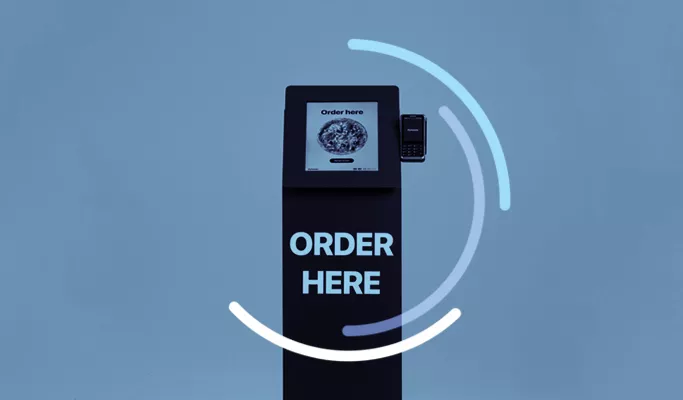Wireless Retail has always differentiated itself from general retail, mainly because inventive phone technology lies at its center. Yet that promise will not be fully realized until new retail technologies and processes such as machine learning, predictive customer behavior, autonomous solutions such as kiosks, and endless aisles of unlimited virtual selections become commonplace.
Retail telecom stores that embrace these strategies will be able to deliver on the promise of digitally immersive and authentic experiences for customers. A convergence of non-wireless retail and telecom built around digital customer engagement will be transformational in our industry. It will engage, entertain, and educate customers in and outside of the store. This is the future of telecom retail.
Covid changes retail
Covid has altered retail and retail management. As a whole, there is an increased demand for digital and no touch solutions. The pandemic put a spotlight on the necessity for building business continuity. We saw telecom operators close up to 80% of their stores at the height of the pandemic because they lacked sufficient technology to continue customer interaction, payment, and processing.
In addition, customers didn’t always feel comfortable at the start of the pandemic, figuring out the social distancing guidelines and other safety measures. And even now surges in the virus can make customers skittish. Think of the annual flu season as an example. Even without Covid, once a year your customers’ anxieties will probably rise. In light of this, there has been a compelling need to find ways to help customers digitally.
Retail has been struggling over the past several years. Covid accelerated that, but didn’t change it. This is where a vision of the store of the future as a digitally engaging experience is grounded.
Legacy transactional vs digital engagement experience
Forward thinking general retailers have been quick to respond. There we’re seeing more artificial intelligence technologies that recognize consumers and make immediate offers. That’s something retail telecom should be doing.
Which experience would you want? The legacy transactional experience in telecom retail might be something like this: The customer comes into the store, buys and leaves. Or perhaps the customer comes in, speaks to the rep, who then goes and pulls the account to see their data – what they have, their lines, and what promotions they might be able to take advantage of it. And after this manual experience, the customer buys (hopefully) and leaves. The current experience feels like a more manufactured engagement and lacks emotional commitment.
Now let’s look at a digital engagement experience. This more often than not would be outside of the telco industry. Imagine artificial intelligence enhancing the sales process to the benefit of the consumer. AI automated and self service centers can allow a customer to come in and access their accounts, which have been analyzed to generate a best offer and best action. This is far more effective than stickers, wall mounted materials, and collateral in creating a more digitally immersive and authentic experience.
Digital Engagement starts where the customer is
In fact, the digital engagement can start right outside the store with an invitation for customers to use their phone and scan a QR code. Within two minutes, the customer can obtain a full quote with current carrier data on their plan and options for the future. The store can come to the customer.
If the customer goes in the store, they will be introduced to technology and autonomous solutions like kiosks for bill payment. This might be a quick action but a satisfying one for consumers. And the AI engine behind the kiosks can provide offers. If they select one, a printed receipt from the kiosk can be taken to the reps to execute the sale. The objective is to enhance an experience by cutting wait time as well as increasing choices.
Benefits of digital experiences
Digitizing the retail telecom experience can bring many of the benefits of technology solutions, which are implemented in general retail. Augmented reality and projection mapping technology in the store can help solve the problem of boredom while waiting in brick and mortar computer stores. This is entertainment brought to the customer while they are waiting their turn at the counter.
Entertaining technology in retail telecom can be educational too, where customers are learning about the products and services as they wait. This keeps customers engaged and in the store, rather than walking out because they have waited too long.
Configurable displays and gamification of offerings can deliver entertaining stimuli to customers as well. Think of a display where a customer’s own gestures control the display. This is no touch Covid-friendly customer interaction while the consumer is waiting their turn to be serviced.
For the customer, all the while they are waiting, they are learning, growing, and understanding what is being offered so that by the time they get to the sales rep, they know what they want because they have seen what they liked. Now they are engaged and entertained but also educated.
Automated sales and self-engaging stores augment the experience for customers. At its best, they will ultimately feel part of the telecom store itself. This immersive experience brings telecom retail closer to some of the best practices of general retail. To make the magic happen, a strong POS keeps transactions flowing while the technology dazzles in the front of the store.
Device & Accessory Vending Kiosks
Device and accessory vending kiosks represent another tier of self-serve that can be brought to the store. They can come stocked with popular products and offer self-serve activations (device and SIM). The process is straightforward: order selection, then payment, and dispensing. Vending kiosks increase sales with large HD monitors that deliver a carrier’s brand messaging directly to end users. It’s a digital first format for purchasing that’s easy for consumers to understand and use.
The kiosks are designed to eliminate product damage, too. Their modular lift system design gently delivers products to the receiving box. The units stock and dispense a variety of products from SIM cards to phones and tablets.
To use the kiosk, consumers open their camera on a smartphone device. They scan a QR code via the camera to engage the system and enter credentials on the smartphone to unlock offers. Consumers then select offers and add accessories to their shopping cart via their smartphone. After that, they tender a no-touch payment and receive a digital receipt when the kiosk automatically dispenses the product.
Locker Stations: Vending & Logistics
Locker stations take vending and logistics to a whole new level. They provide order pickup, fulfillment, and vending. These stations can also deliver device diagnostics, warranties, and help with repair claims. Finally, they can deliver integrated reverse logistics, which provide for returns and exchanges.
The process at a locker station is touchless with purchase via a website or mobile application. Fulfillment is also touchless via a QR code, enabling in store or curbside pickup, and same day local delivery.
Locker stations deliver a high degree of flexibility for the consumer, enhancing the value of the carrier’s brand. It is a short term solution for attracting more customers to the store. Kiosks and lockers offer a kind of business leverage because they can constitute a store within a store, and lead the way to the fully autonomous store of the future.
Conclusion
Retail, technology and telecom are part of the DNA of our company and prime movers in post Covid sales. We can help in leveraging novel retail technologies into retail telecom, which carriers will find as the core of their future growth.



